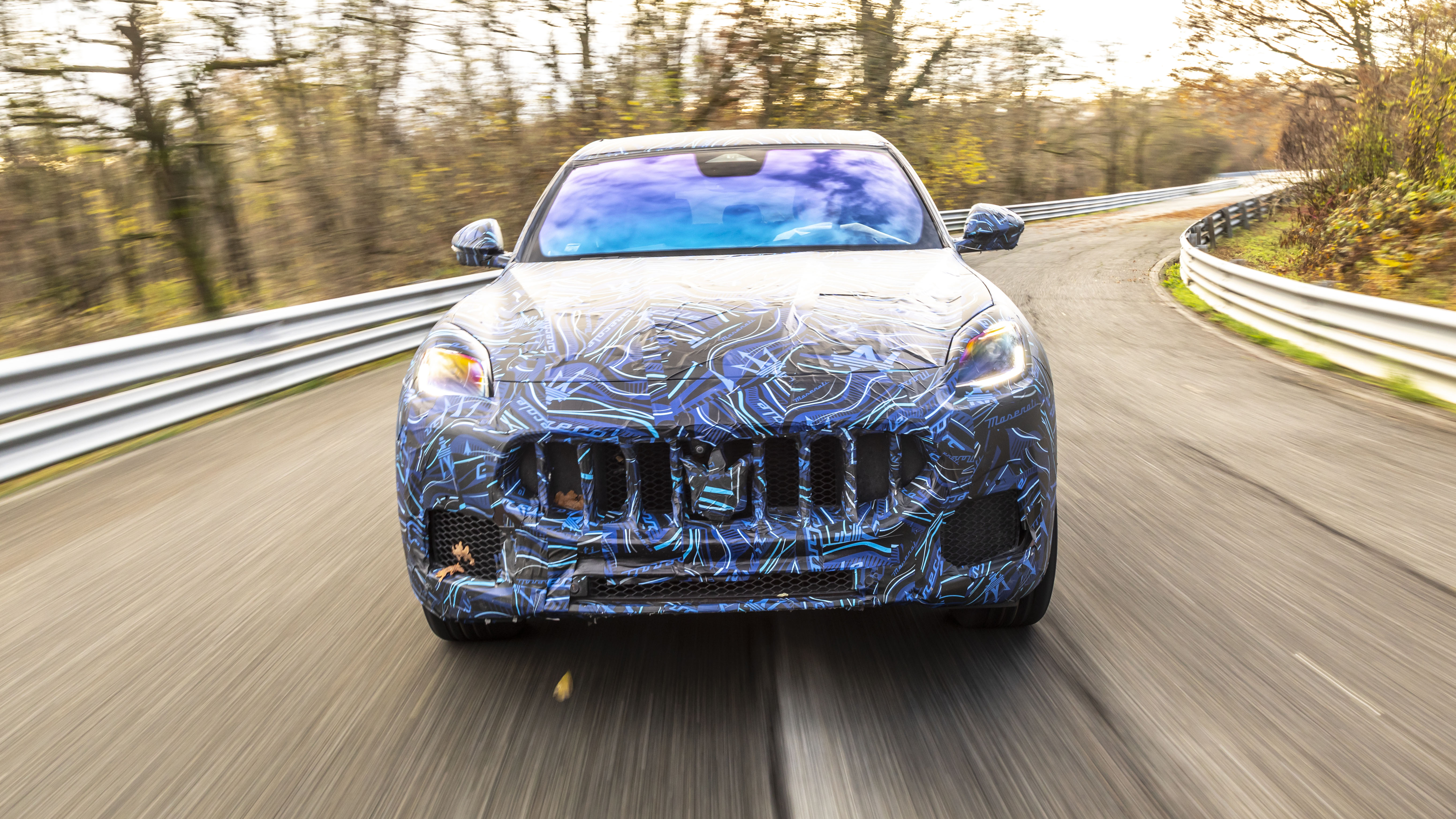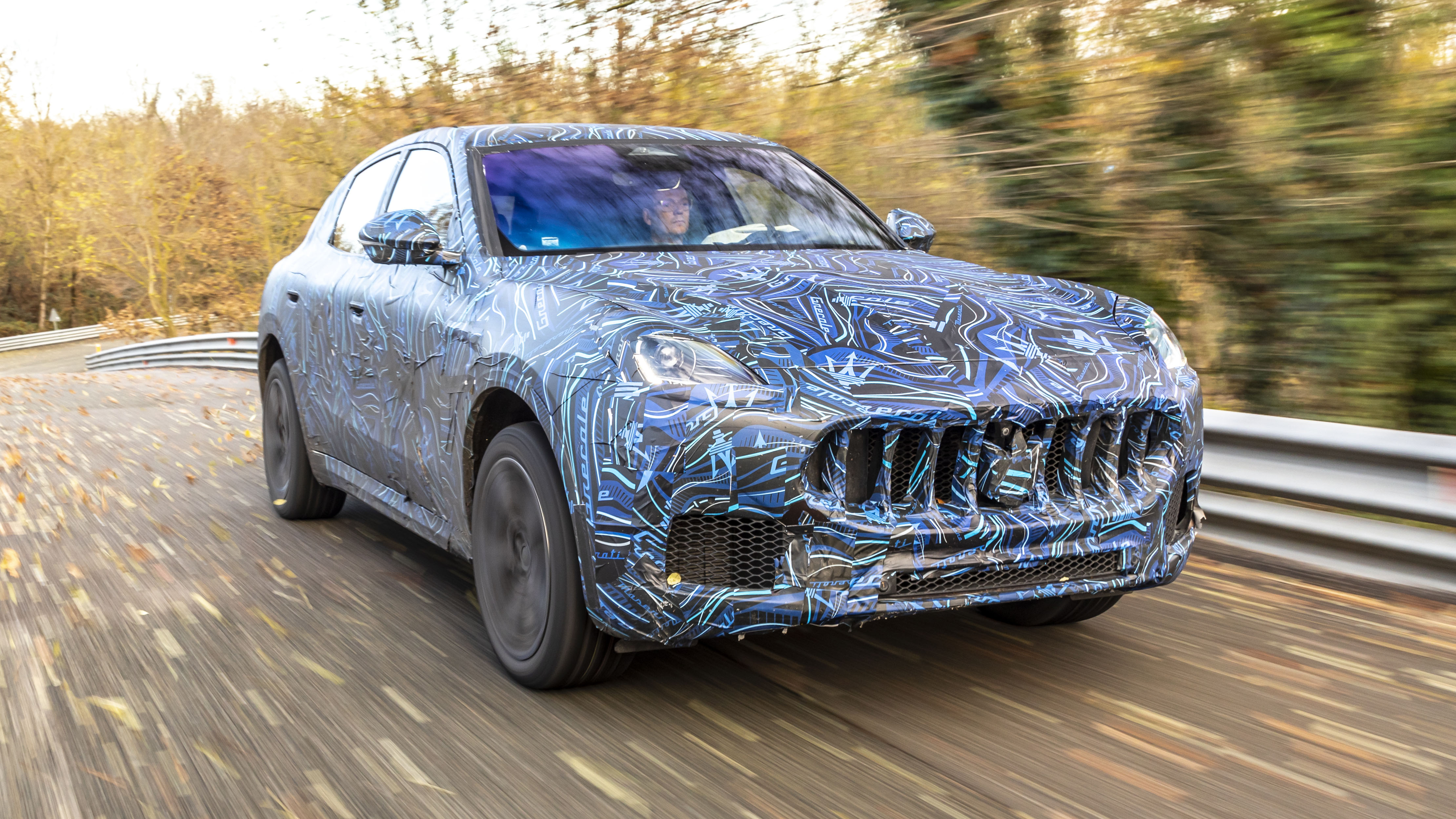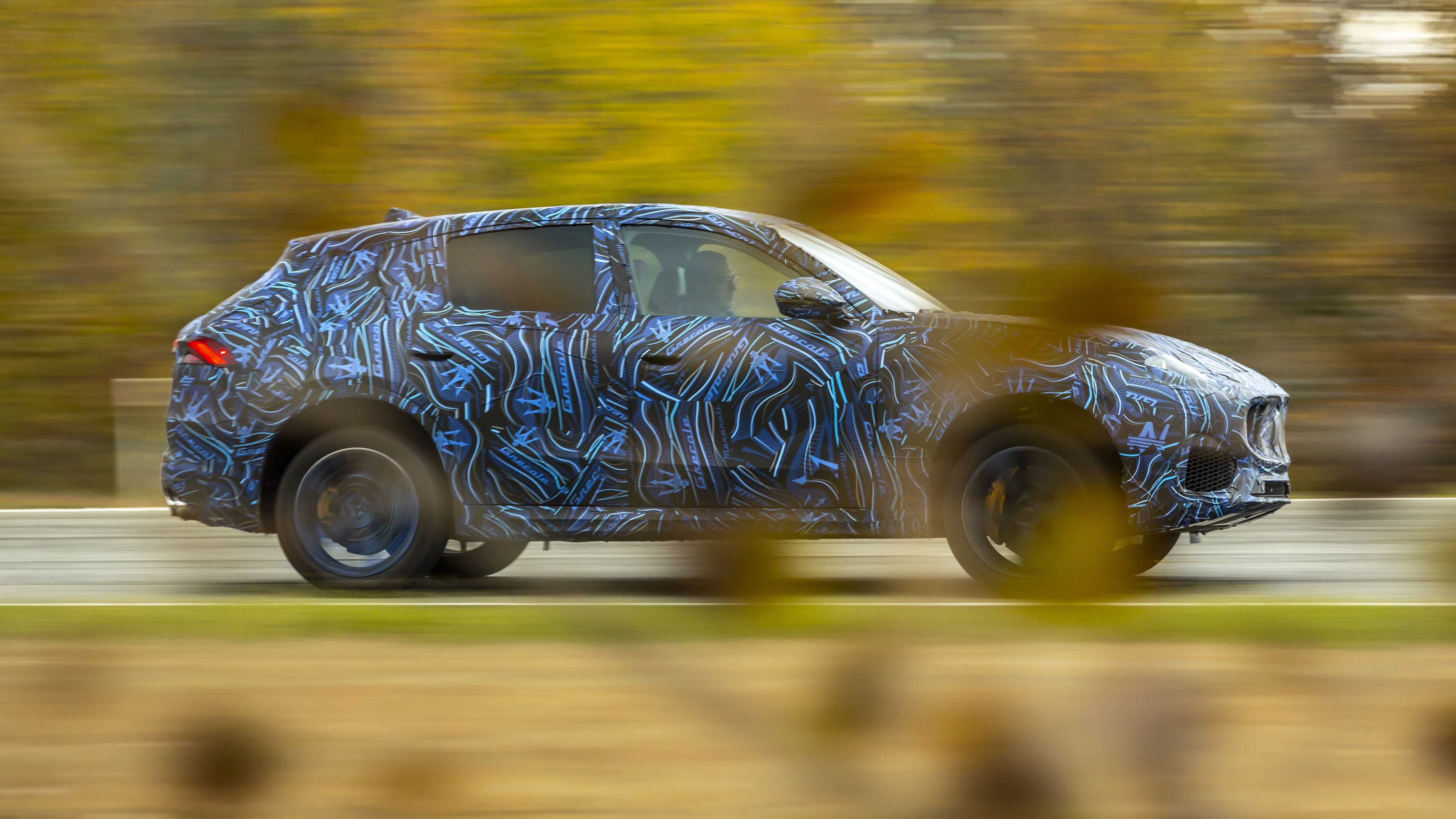
Maserati Grecale prototype review: can this SUV save Maser?
Wasn’t the Grecale due to be revealed about now?
It was. But the semi-conductor shortage that has jacked up the values of used cars is also disrupting the launch of new ones. The Grecale is Maserati’s new mid-sized SUV and critical to the company’s volume ambitions. But those ambitions will just have to wait a while longer. We’ll see the finished thing sometime next Spring, drive it in the summer, with UK deliveries likely in Q4 of 2022. On which basis we figured it was worth taking a spin in the camouflaged verification prototype you see here.
Verification? How far along the chain is that?
Pretty much the last stop before full production. This car is running all the latest systems and sub-systems, so we’ll get a good feel for where Maserati is at. We’re with chassis software engineer Giovanni Bussalai today at the sprawling Stellantis test track in Balocco, midway between Milan and Turin, and he’s finessing the final set-up. In excess of 250 prototypes have been constructed, with a session in the Arctic all that remains for the development team in the coming months. Interestingly, Bussalai says that he and his people are the go-to guys in the group for this part of the engineering process; all cars these days are the sum of their software coding, and the Grecale’s template will become the reference point for other Stellantis SUVs. Not just significant for Maserati, then.
What about the bits that aren’t made up of ones, zeroes and algorithms?
The Grecale aims to democratise the Maserati brand without sacrificing the charisma – the one thing these Trident-badged cars have over their more ubiquitous rivals. Against the likes of the Audi Q5, BMW X3, Jaguar F-Pace and Porsche Macan, Maserati bullishly claims the Grecale is/will be best-in-class for interior space, driveability, handling, acceleration, sound, and in its use of high-end materials. It’s certainly physically imposing: it’s 4.8m long and 1.67m tall, and its near-3m-long wheelbase certainly delivers ample rear seat space (it’s 100mm longer than a Macan’s). Maserati says the Grecale can accommodate 99th percentile human beings in the front and rear. Objectively speaking, do you really need the full-size Levante SUV? We suspect that the Grecale will also be a more coherent looking car than its plus-size sibling.
Rich folk will always want the biggest model. What about the rest of us?
There’s no doubt that the Grecale has to position this cool but quixotic brand firmly on the mainstream radar. Porsche is now making in excess of 300,000 cars per year – most of which are SUVs – without suffering any collateral damage to its image. It’s an automotive Jedi mind trick Maserati would dearly love to pull off. The Grecale feels right the moment you climb aboard; it uses a recessed electric door release for entry rather than a physical handle as on the MC20 supercar (and Ferrari Roma), with a soft-touch button inside to open the door for exit. Good for aero and weight-saving, says Maserati. The seats are superior to the class norm, the driving position a nice compromise between commanding SUV and sportily low-slung.
Given its prototype status, the dashboard and centre console are covered in fabric but we have a look anyway. Highlights include a 12.3in ‘ultra HD’ central touchscreen whose graphics and interactivity are similar to those in the MC20, so that augurs well for the new car, with a second 8.8in one below it for climate control, heated seats and so on. The traditional Maserati clock is still front and centre at the top but it’s gone fully digital now, and can be flicked through various displays: time, g-force, direction, and brake or throttle pressure. The main instrument display can also be configured in various ways, as is the case in most premium cars these days. The steering wheel is a large three-spoke job with the usual armoury of buttons festooned all over it, and a little drive controller on the lower right hand side. But the key thing is that the Grecale doesn’t feel like a lumbering SUV masquerading as a sports car. You almost ‘wear it’, like a decent suit as opposed to many SUVs’ baggy outdoor apparel.
There’s a palpable rear-drive bias to the Grecale as you work through the modes which we approve of
Good to know. Does it walk the walk?
This particular part of the Balocco complex is a four-mile loop that does a great job of mimicking your favourite B-road, including the bits that the local council can’t be arsed to resurface. The Grecale, happily, is one of those cars that scores well on the 50m test. First impressions are all of the non-sporty variety: the Grecale’s ride on the 20in wheels is very well-judged, although it’s important to note that the car we’re in is fitted with air suspension to go with its adaptive damping (steel springs are standard on the entry-level car). What else? More unsportiness: it’s extremely refined at normal speeds (the side windows are double-glazed), and its steering is impressively linear if not overflowing with feel. But who buys a car like this – even one with a Maserati badge – looking for laser-sharp turn-in?
It’s a Maserati! Isn’t that the point of it?
Not entirely. This is a new era, remember. Besides, its deftness shouldn’t be a huge surprise because the Grecale uses a modified version of the excellent Giorgio platform that underpins the Alfa Romeo Giulia and Stelvio. It’s a relatively subtle and supple set-up, with a little more roll than you’ll find elsewhere, but that doesn’t mean it lacks agility or poise. Bussalai and his cohorts are still finalising the Grecale’s vehicle dynamics control module (VDCM) that governs its chassis; there are four drive modes – comfort, GT, sport and off-road – working across the usual parameters, and the algorithms do a pretty seamless job of apportioning torque and braking an individual wheel according to mode. Keeping the Grecale out of Balocco’s often perilously close armco, even when it’s slippery and the driver is acting the idiot, is more fun than it really ought to be. There’s a palpable rear-drive bias to the Grecale as you work through the modes which we approve of; the open differential can be upgraded to a limited slip one, with an e-diff under development. Perhaps it could use a little more brake feel, but mostly it’s a satisfyingly rounded device despite its size and requirement to act as an all-rounder. And it has true character. No issues with the ZF eight-speed auto, or the outsized paddles behind the wheel if you want to shift manually. And you will, which speaks volumes.
What about its powertrain?
Amid the unfolding Stellantis synergies, the fastest Grecale – Trofeo? – will be powered by a detuned version of the 3.0-litre twin turbo Nettuno V6 that does a pretty great job of propelling the MC20. There will also be, of course, a fully electric Folgore version, which will likely be equally fast while mapping out a totally different emotional terrain. For now we have to make do with the familiar turbocharged 2.0-litre, 48-volt mild-hybrid four-cylinder that produces 296bhp, and emits a fairly robust exhaust note even at a standstill. There’s an integrated starter generator for faster stop/starting and to charge up an additional battery under the boot floor. This also powers an electric compressor – which Maserati refers to as an ‘e-booster’ – to obviate any lag from the turbo. It should provide a performance and efficiency win-win situation, and also helps pony up a useful 331lb ft. It’s interesting how any preconception about a paucity of cylinders has dissipated. This is a characterful engine and it works just fine in this installation. It’s raucous enough without getting on your wick, sufficiently quick to keep that chassis on its toes.
A promising introduction, then.
It is. Maserati has always dreamt big and various factors have conspired to derail the grand plan. Salvation may yet arrive in the form of a D-segment SUV, which is an unusual turn of events but one that the company will gladly accept. We don’t know how much it’s going to cost or what the final consumption and emissions numbers look like. Sure, anticipation is running higher for the new GranTurismo, but the Grecale’s the Maserati that’ll pay the bills.
Top Gear
Newsletter
Thank you for subscribing to our newsletter. Look out for your regular round-up of news, reviews and offers in your inbox.
Get all the latest news, reviews and exclusives, direct to your inbox.
Featured

Trending this week
- Car Review
Ferrari Amalfi
- Long Term Review
Is the Suzuki Swift still the best small car money can buy?






